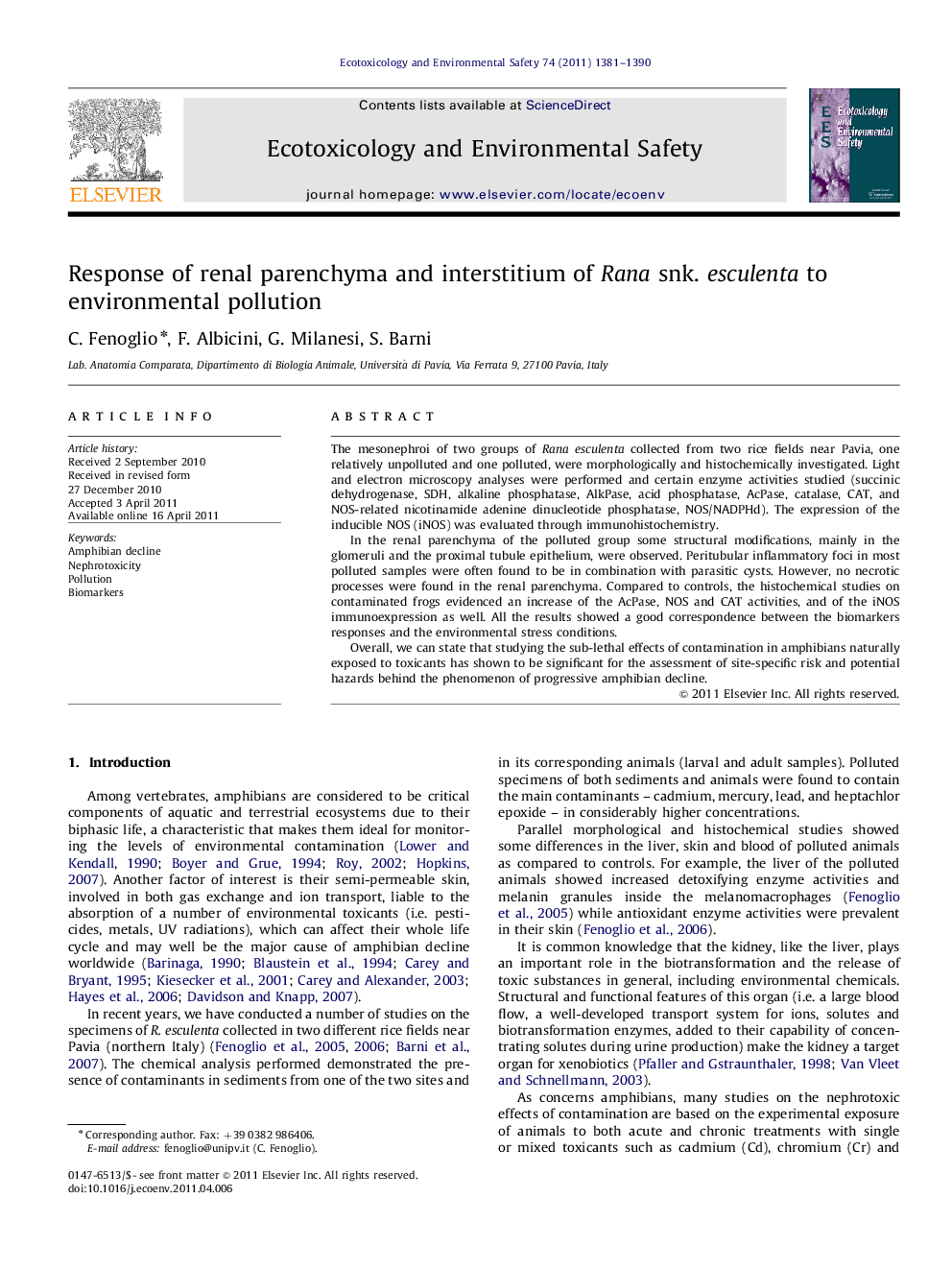| Article ID | Journal | Published Year | Pages | File Type |
|---|---|---|---|---|
| 4421220 | Ecotoxicology and Environmental Safety | 2011 | 10 Pages |
The mesonephroi of two groups of Rana esculenta collected from two rice fields near Pavia, one relatively unpolluted and one polluted, were morphologically and histochemically investigated. Light and electron microscopy analyses were performed and certain enzyme activities studied (succinic dehydrogenase, SDH, alkaline phosphatase, AlkPase, acid phosphatase, AcPase, catalase, CAT, and NOS-related nicotinamide adenine dinucleotide phosphatase, NOS/NADPHd). The expression of the inducible NOS (iNOS) was evaluated through immunohistochemistry.In the renal parenchyma of the polluted group some structural modifications, mainly in the glomeruli and the proximal tubule epithelium, were observed. Peritubular inflammatory foci in most polluted samples were often found to be in combination with parasitic cysts. However, no necrotic processes were found in the renal parenchyma. Compared to controls, the histochemical studies on contaminated frogs evidenced an increase of the AcPase, NOS and CAT activities, and of the iNOS immunoexpression as well. All the results showed a good correspondence between the biomarkers responses and the environmental stress conditions.Overall, we can state that studying the sub-lethal effects of contamination in amphibians naturally exposed to toxicants has shown to be significant for the assessment of site-specific risk and potential hazards behind the phenomenon of progressive amphibian decline.
